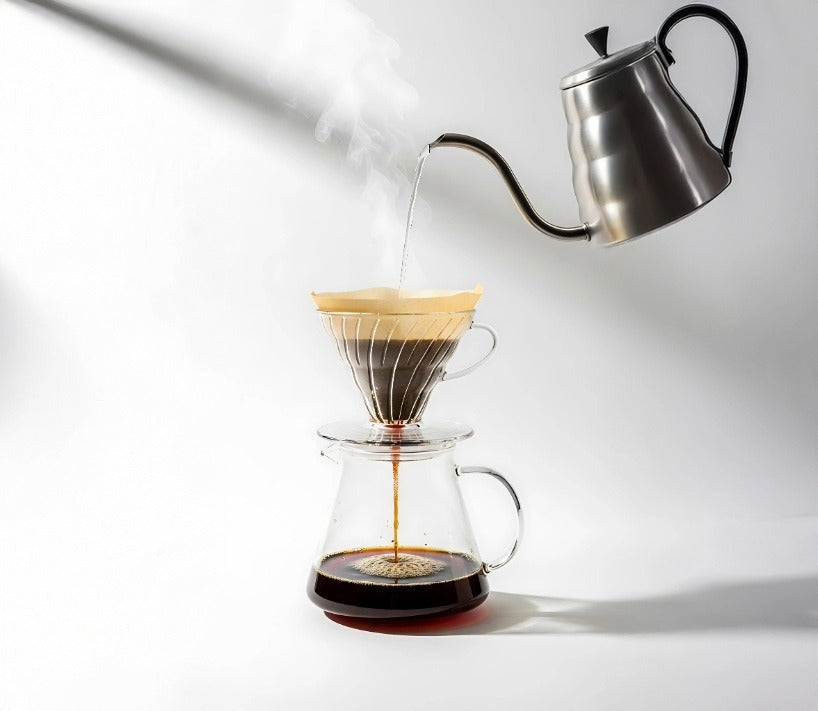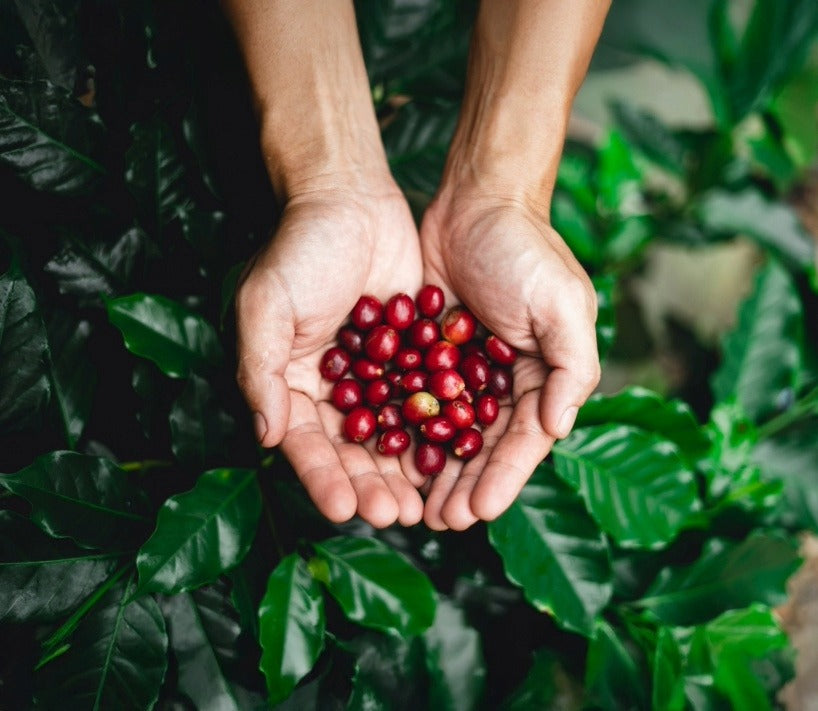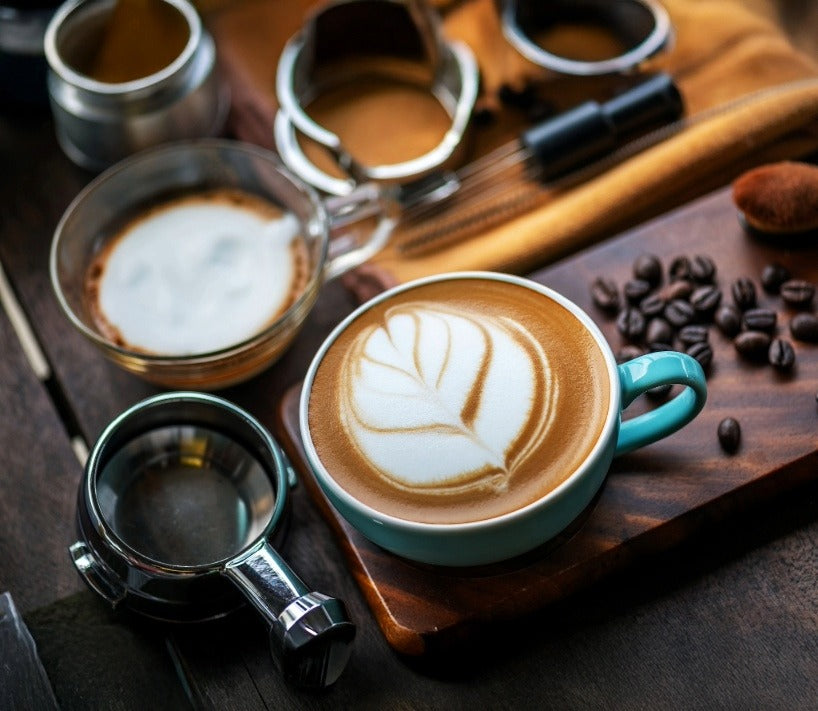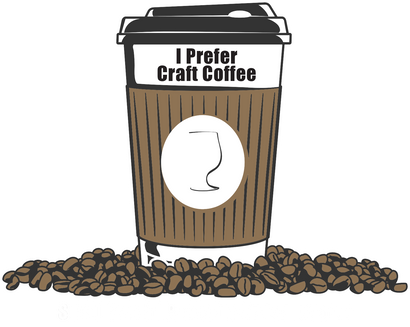Best Craft Coffee to Make at Home: Why Brewing at Home is the Best Choice!
September 05, 2025 4 min read
Best Craft Coffee to Make at Home: Why Brewing at Home is the Best Choice!
My kitchen coffee used to taste like burnt toast. I’d blame the beans, then the grinder, then my mood. The truth? I was buying whatever was on sale and treating "best by" dates like gospel. Once I learned what actually matters, I stopped wasting mornings and started making café-level cups at home.
This post shows you exactly how to make the best craft coffee to make at home — no barista school, no complicated gear, just practical steps (and exact numbers) so your next cup actually tastes like you meant it to. Read on for equipment choices, grind & dosing, water temp, step-by-step recipes, and a comparison table to cut through the noise.
Why this works
I roast, test, and ship coffee daily — so I see what’s different between “meh” coffee and genuinely great coffee: freshness, grind consistency, proper ratio, and the right tool for your routine. I’ll give you the quick-win tactics that create the biggest flavor jump for the least effort.
Equipment (Brewers Compared)
Pick one brewer that fits your morning. Owning five doesn’t make your coffee better — using one correctly does.
-
Pour-over (V60 / Kalita Wave) — Great for clarity and tasting notes.
-
AeroPress — Fast, forgiving, concentrated flavor.
-
Automatic drip (quality machine) — Convenient, consistent for households.
-
Espresso / Capsule — Quick café-style shots/capsule convenience.
- Fellow Aiden **Best Automatic Pour-over Brewer on the market (IMO)
See the full shop if you need beans for any of these brewers: Shop our coffees. If you want a curated monthly plan to keep your beans peak fresh, check: Better Morning Coffee Club.
Grinder & Grind Settings
-
Burr grinder (required) — Manual or electric. Conical or flat burr.
-
Grind settings (general):
-
Espresso: Fine (like powdered sugar)
-
AeroPress: Medium-fine
-
Pour-over: Medium (table salt)
-
Drip: Medium-coarse
-
French press: Coarse (crumbly)
-
Grind & Dosing (Exact numbers)
-
Ratio (sweet spot): 1:15 — 1:17 (coffee : water by weight) (Why a ratio!? - Because we all like our coffee different. Some strong & some weak)
-
Example: 16 g coffee → 240 g water (1:15)
-
-
Common doses:
-
Single cup (pour-over): 16 g coffee / 240 ml water
-
AeroPress short: 15–18 g / 200 ml water
-
Automatic drip (full pot): 60 g coffee / 900 ml water
-
Use a kitchen scale — eyeballing is the #1 flavor killer.
Water Temp & Brew Time
-
Water temp: 195–205°F (90–96°C). Boil then rest 30–45 seconds if no thermometer.
-
Brew times:
-
Pour-over: 2:30 – 3:30 minutes
-
AeroPress: 1:00 – 2:00 minutes (depending on recipe)
-
Drip: machine-dependent; aim for consistent extraction
-
-
Use filtered water if your tap tastes odd.
Brewing Steps — Simple, Repeatable Recipe (Pour-over example)
-
Heat 240 ml water to ~200°F (94°C).
-
Grind 16 g coffee to medium.
-
Rinse filter, add coffee.
-
Bloom: pour 40–50 ml water, wait 30–45 sec.
-
Pour remaining water slowly in spirals, finish pour by 2:30–3:00.
-
Let drain, serve immediately.
Repeat with the same numbers until it tastes the same — that’s consistency.
Troubleshooting & Common Mistakes
-
Too sour? Under-extracted — finer grind or longer brew time.
-
Too bitter? Over-extracted — coarser grind or shorter brew.
-
Flat or weak? Use fresher beans (roast date matters) or increase dose.
-
Stale beans? Toss if roast date > 4 weeks (whole bean) or > 2 weeks (pre-ground).
Comparison Table — Satisfaction Experience
| Coffee Type | Recommended for | Time to cup | Grind setting | Resulting flavor profile | Skill level / cost |
|---|---|---|---|---|---|
| Fresh air-roasted, high-scoring (home) | Flavor nerds & people who want café taste | 3–5 min (pour-over/AeroPress) | Medium / tailored | Bright, complex, vibrant | Medium skill / moderate cost |
| Supermarket beans (bagged) | Convenience shoppers | Instant (pre-ground) | Pre-ground | Dull, one-note, often stale | Low skill / low cost |
| Chain coffee (to-go) | When you need speed & consistency | 5–15 min (drive + wait) | Barista controlled | Reliable, but not always fresh | Low skill / variable cost |
Freshness & Buying Guidance
Roast date > best-by date. Roast date tells you when flavor peaked; best-by is often a shelf-life marketing line. Aim to buy within 2–10 days after roast for peak freshness and consume within 2–4 weeks (whole bean).
When you order coffee online, look for roast-date transparency and a roast-to-ship policy. For an in-depth primer: Coffee bean buying guide & tips. If single-origin tasting is your jam, choose it — blends are better when you want consistent daily cups. For ongoing peak freshness, consider joining a subscription like my Curated Better Morning Coffee Program.
If you want a quick checklist before checkout, read about how I roast and why it matters: About our roastery.
Common mistakes new coffee lovers make at home
-
Buying pre-ground in bulk.
-
Ignoring roast dates.
-
Using the wrong ratio because “it looks right.”
-
Expecting one brew method to do everything.
Fix each with precise steps above. Your fastest flavor wins come from fresher beans + correct grind.
FAQ For New Coffee Lovers At Home
Q1: What is the best craft coffee to make at home?
A: The best craft coffee to make at home is fresh, air-roasted coffee with a clear roast date roasted within 2–10 days of purchase and brewed with the right ratio and grind.
Q2: How should I order coffee online to get the freshest craft coffee online?
A: Order from roasters that show a roast date, offer small-batch roasts, and ship quickly. Use subscriptions for regular fresh deliveries.
Q3: What grind should I use for pour-over vs AeroPress?
A: Pour-over: medium. AeroPress: medium-fine. Espresso: fine. French press: coarse.
Q4: How much coffee per cup is ideal?
A: Start with 16 g coffee to 240 ml water (1:15) and adjust to taste.
Q5: Is single-origin better than blends for home brewing?
A: Single-origin highlights specific flavors; blends are often more balanced and forgiving for everyday brewing.
PS: Want a no-guess brew plan? Grab our free 3-step Morning Brew Checklist at the Coffee bean buying guide & tips.
Also in Best Coffee To Buy Online Education

Biggest Mistake With Pourover Coffee: It's Your Beans
January 02, 2026 3 min read
Learn how to brew the best pourover coffee at home with the best tasting craft coffee online. Remember, the best coffee to drink at home starts with the freshest craft coffee online, not the bargain bin beans at your local supermarket.

Specialty Roast Coffee Beans Online: What’s the Deal, Really?
January 01, 2026 4 min read
You'll learn what specialty roast coffee beans online actually means, and why it translates to the best tasting craft coffee at home.

High-Score Coffee Beans Online: Why 85+ Points Actually Matter
December 31, 2025 3 min read
Learn why the best tasting craft coffee online is high-scoring specialty coffee that tastes better and how to choose the right beans online. Order coffee online from a roaster you trust.
